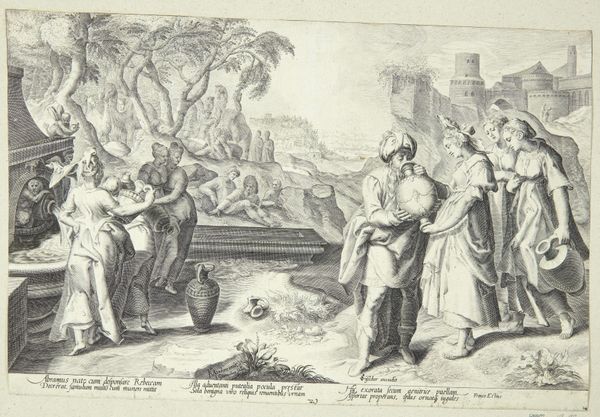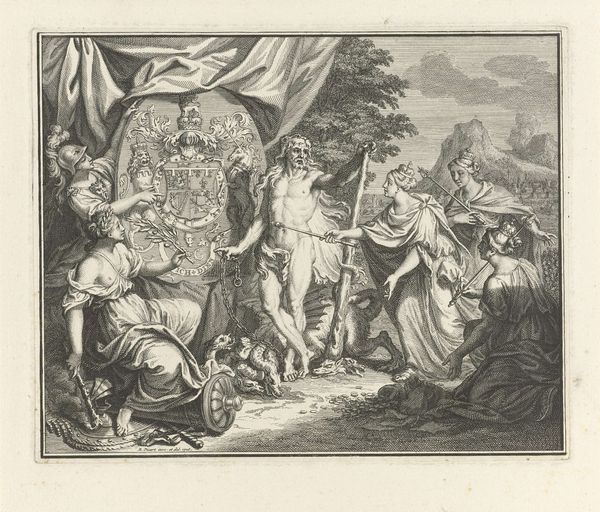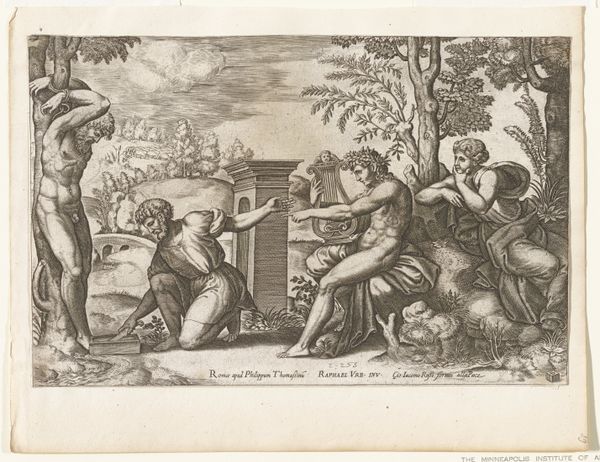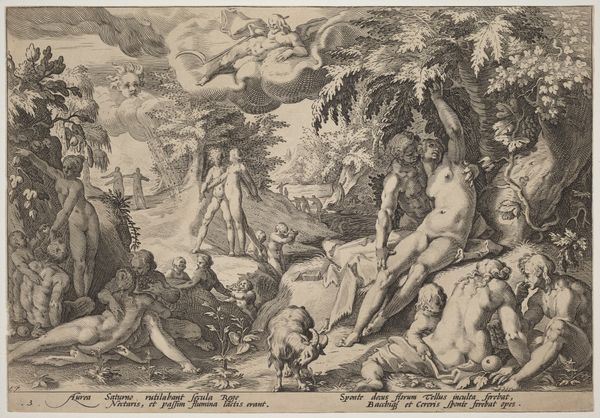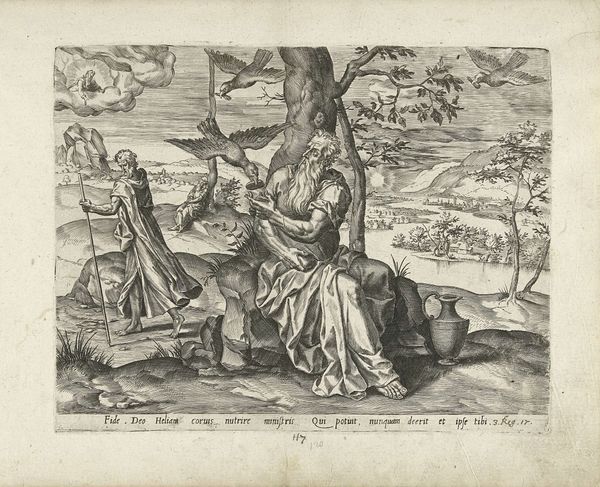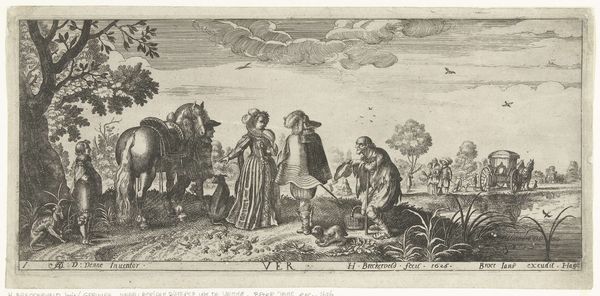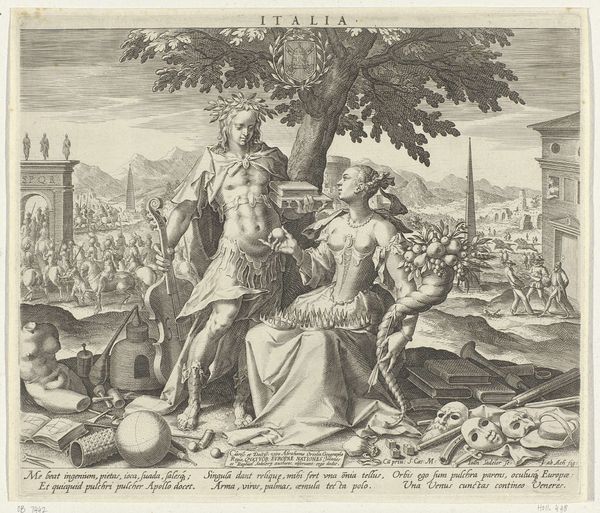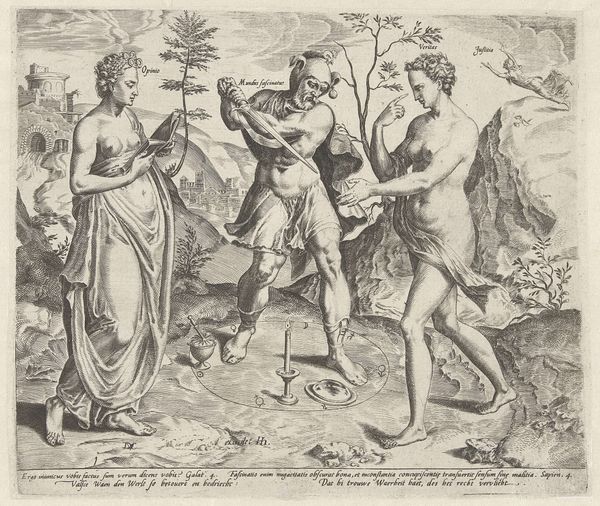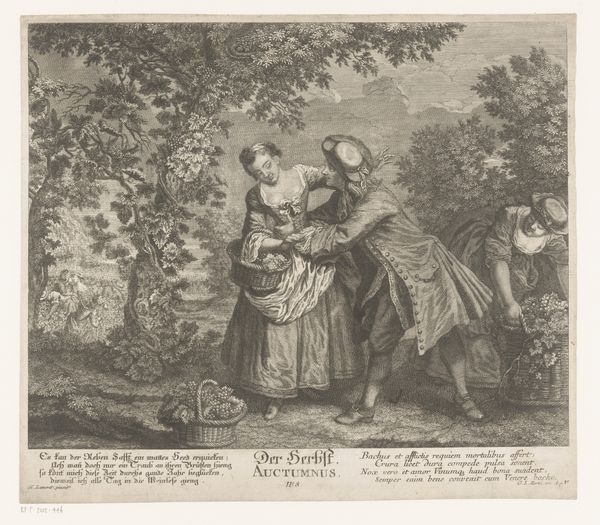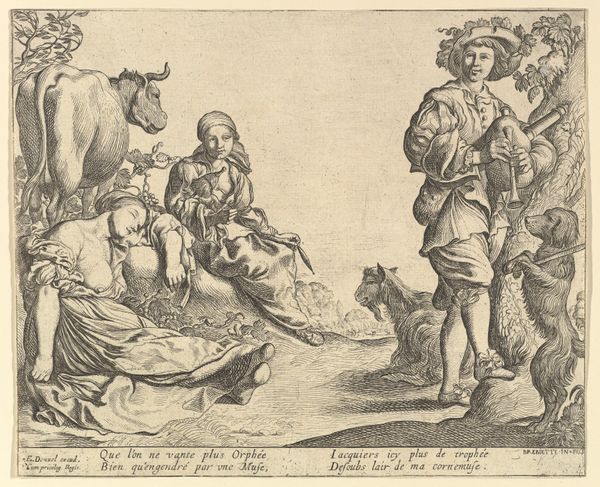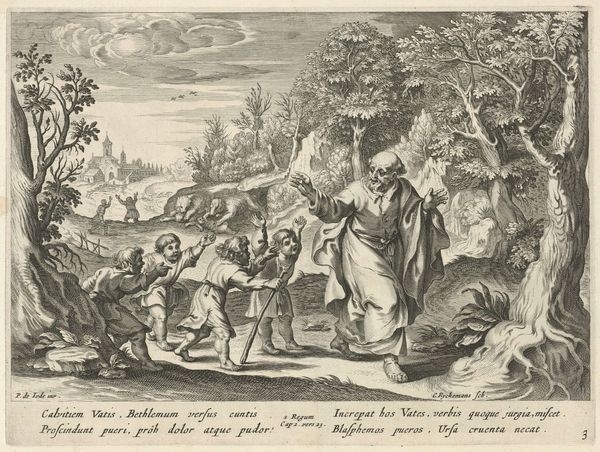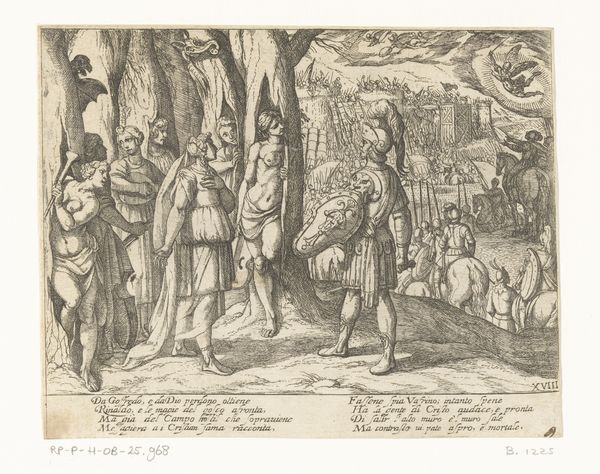
print, engraving
#
narrative-art
# print
#
old engraving style
#
figuration
#
line
#
northern-renaissance
#
engraving
Dimensions: height 217 mm, width 275 mm
Copyright: Rijks Museum: Open Domain
Curator: This engraving, created by Hendrick Goltzius around 1580, is titled "Orpa verlaat Naomi en Ruth"—"Orpa Leaving Naomi and Ruth". What’s your initial response to it? Editor: The strong linearity really strikes me. It has this incredibly detailed, almost stark quality to it, even while portraying a quite emotional departure. The emphasis seems to be less on capturing the feeling and more on recording the forms, almost like a diagram of grief, or a choreography of labor given the material burden they carry. Curator: Absolutely. It depicts a pivotal moment from the Book of Ruth. Naomi, widowed and returning to Bethlehem, urges her daughters-in-law, Orpah and Ruth, to return to their Moabite families. Orpah chooses to leave. Editor: I see. I'm interested in the physicality, how that departure is communicated. Look at what each woman is carrying, how they're equipped, or not. What’s packed reflects both what they own and where they're going, and that's a huge factor in deciding to stay or go. Naomi with the large load… she clearly has farther to travel. What does this labour really look like in a widow’s world, and who does what? Curator: Precisely. It highlights the vulnerability and agency of these women in a patriarchal society, grappling with loss, identity, and the difficult decisions forced upon them as migrants. Naomi, positioned centrally and laden down, becomes a locus of intersectional identity, a migrant Jewish woman struggling in a changing society. Editor: And the landscape acts almost as another layer of the burden. These linear striations creating space that needs to be overcome with sheer labour... And these garments! Clearly communicating their respective stations, with Naomi's being the humblest in make and wear. Curator: The clothing, rendered so meticulously through engraving, speaks volumes about status, place, and even perhaps Goltzius’s own reflections on class and displacement. This is a scene that’s very specific to its time but speaks to broader societal challenges of migration and displacement in ways that make it persistently relevant. Editor: Seeing this level of detailed process as inherently tied to these biblical stories gives the work this raw feeling, pulling from a deep well of skill. The material is the message and that is an interesting through line to maintain today. Curator: Yes, absolutely.
Comments
No comments
Be the first to comment and join the conversation on the ultimate creative platform.


